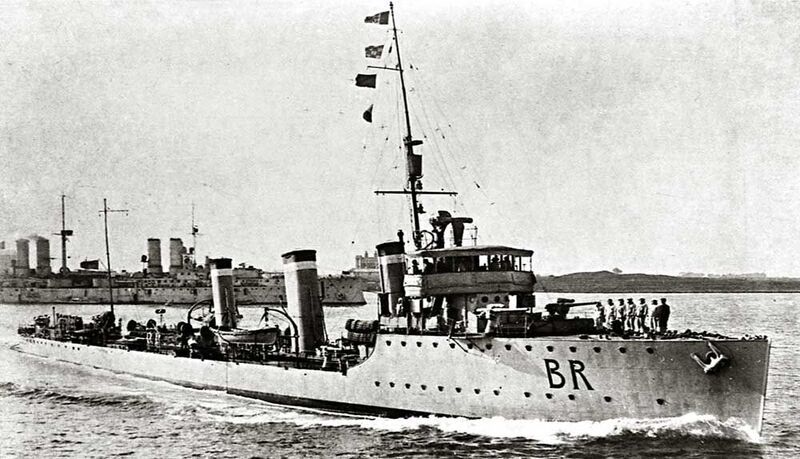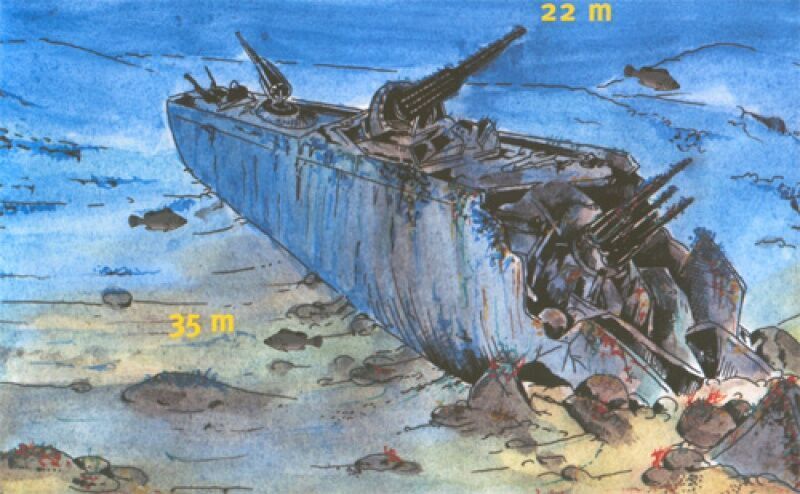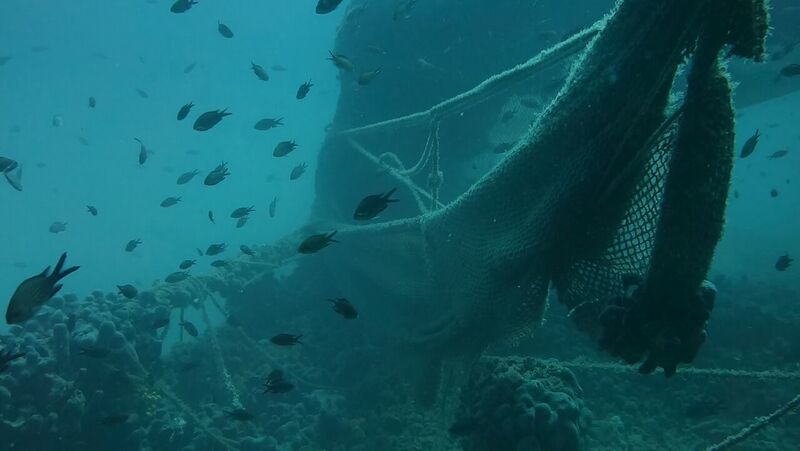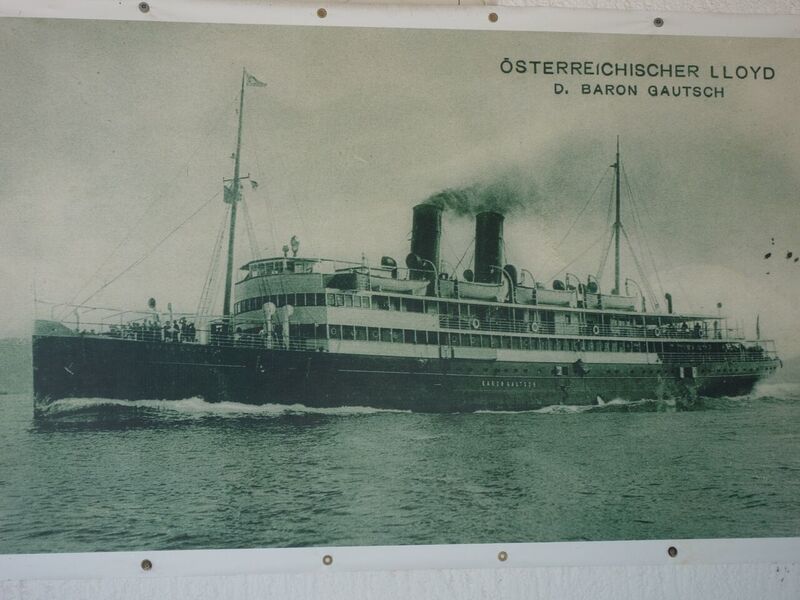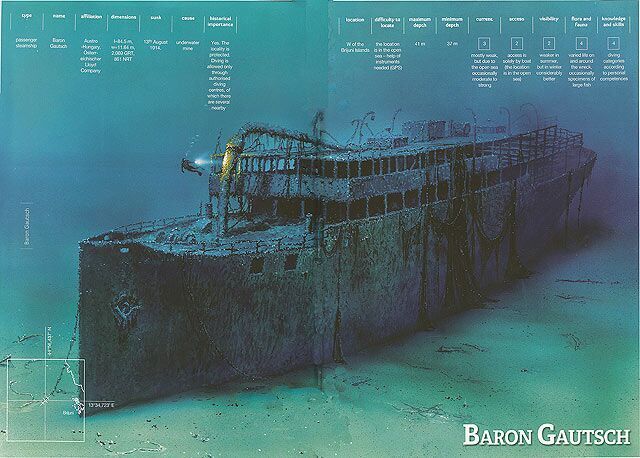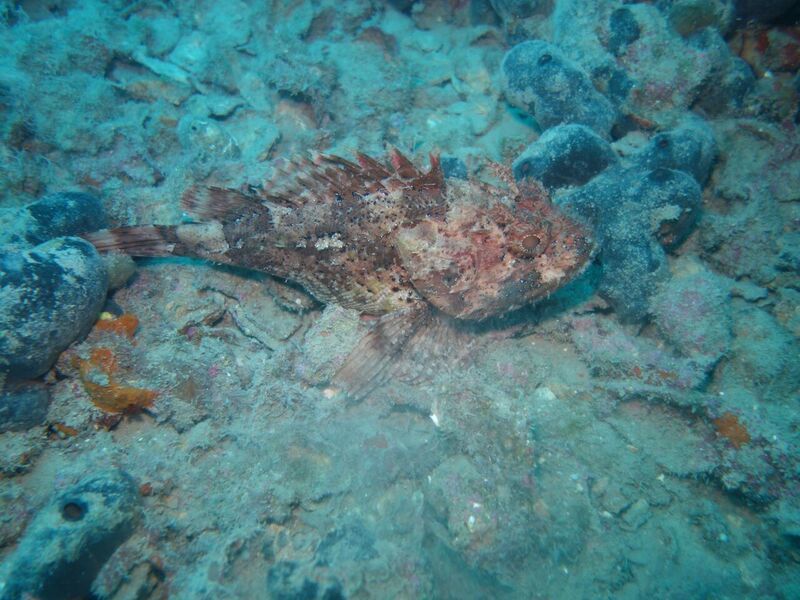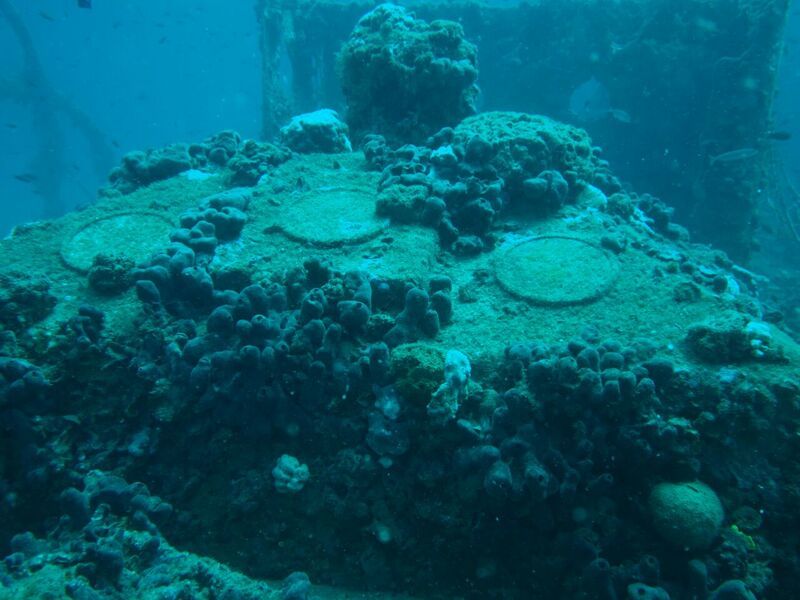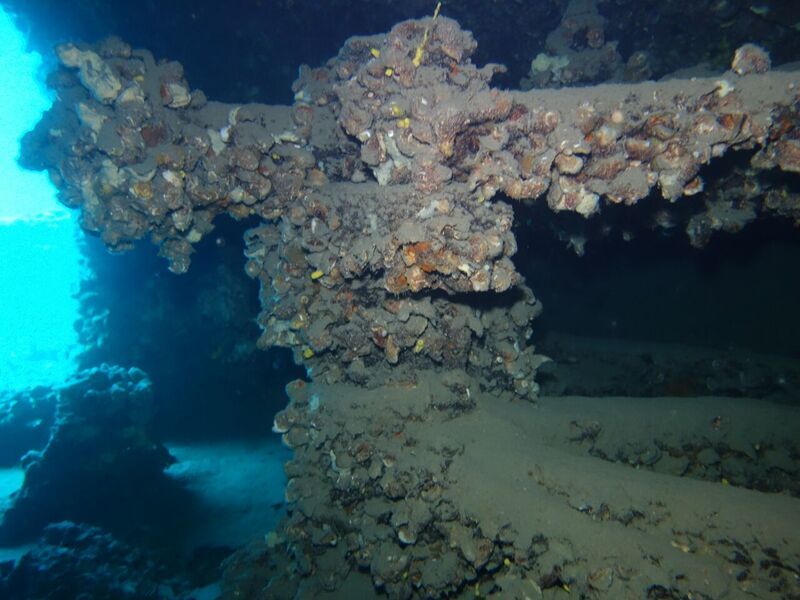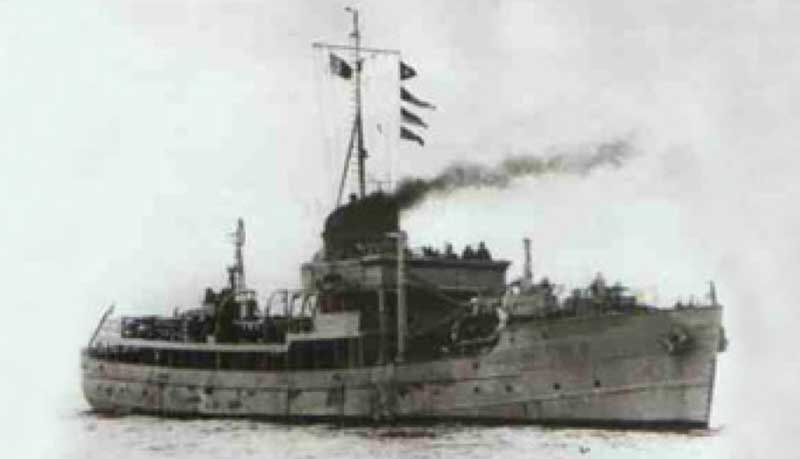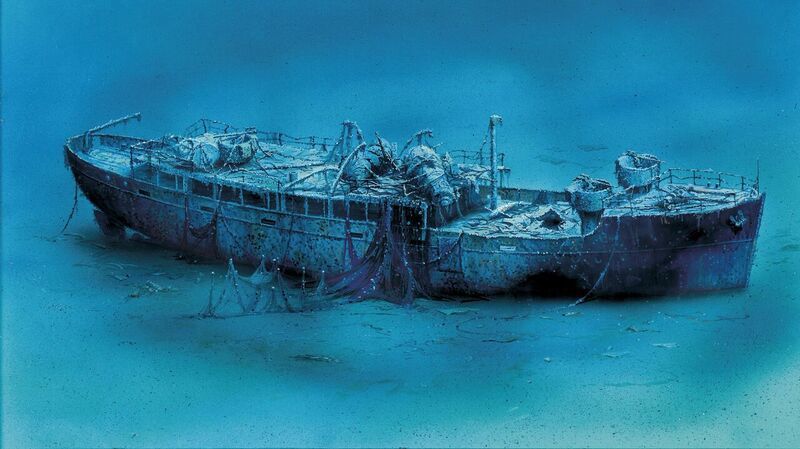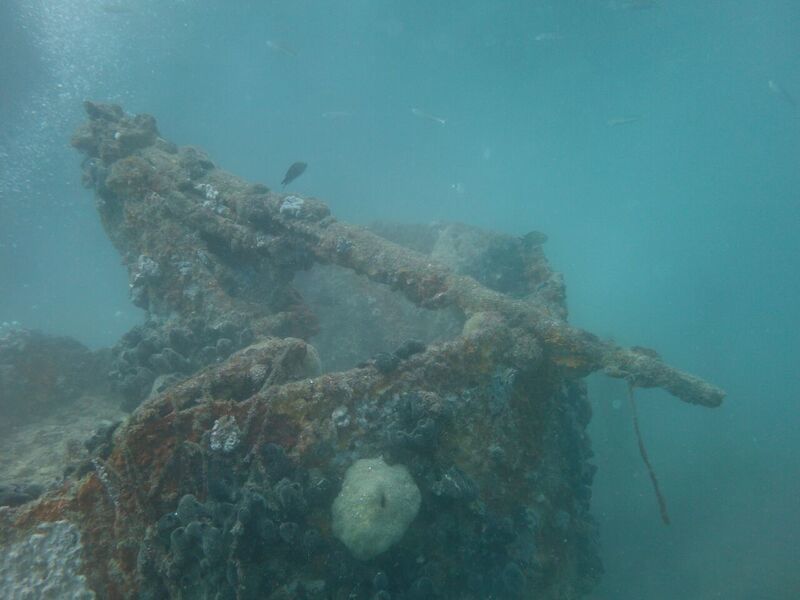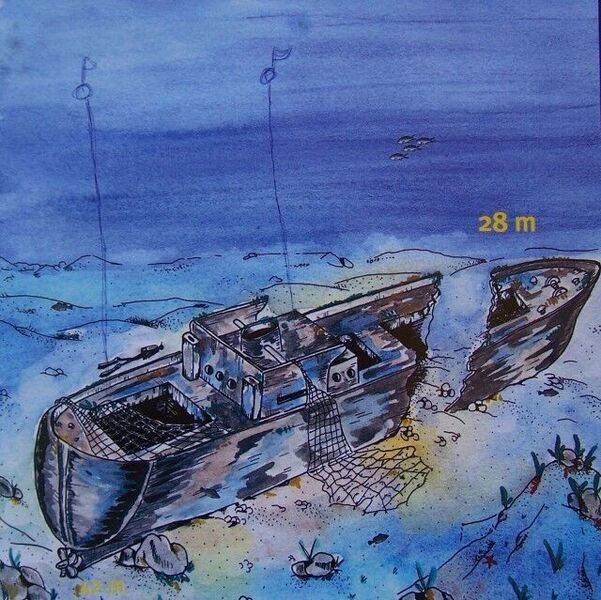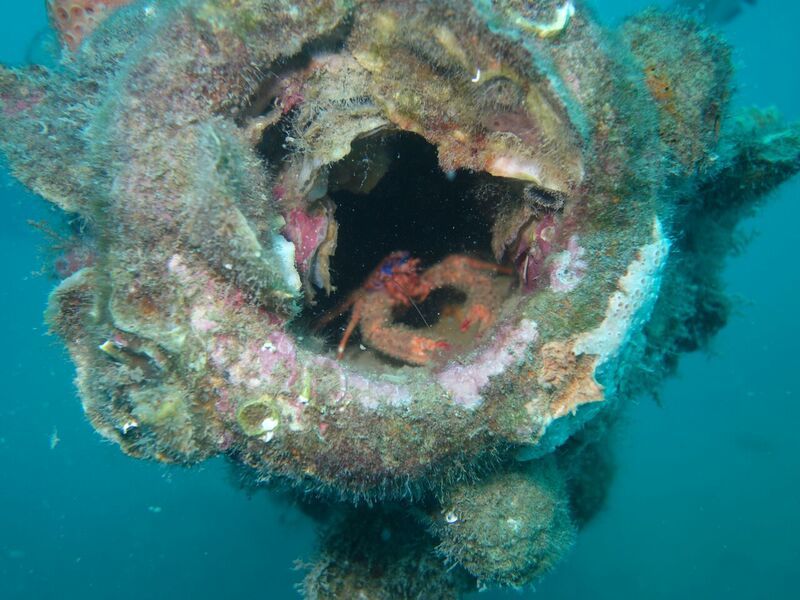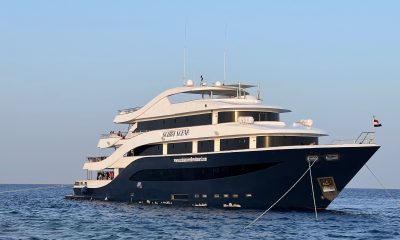News
A Croatian Dive Safari
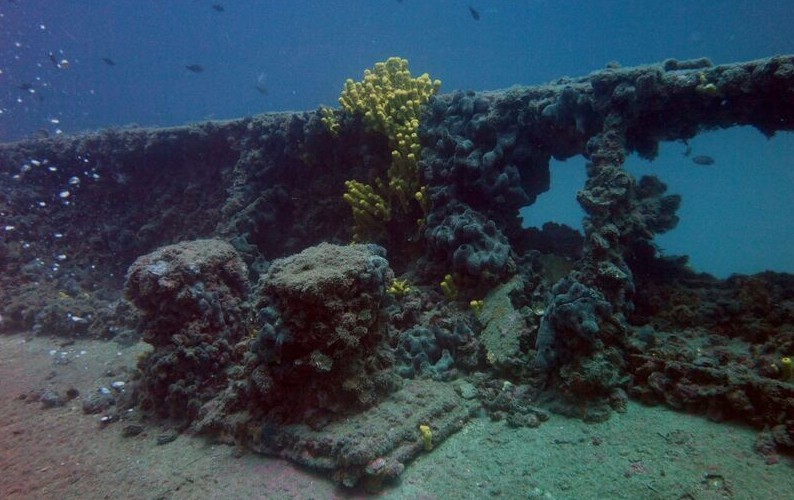
Diving Istria’s “Big Five” shipwrecks
The west coast of Croatia’s Istrian peninsular has been a popular tourist destination for decades, captivating visitors with its combination of sunny climate, great natural beauty, and sandy beaches lapped by the warm waters of the northern Adriatic Sea.
For any diver with an interest in ships and maritime history though there are other reasons to visit; top class shipwrecks!
In June 2016 I took the opportunity to combine my passion for shipwrecks and my wife’s desire to escape rainy England by taking a holiday near the pretty Istrian town of Rovinj where she could enjoy the hotel’s beaches and facilities whilst I undertook a wreck diving safari visiting the “Big Five” of Istria’s classic wreck sites.
First up was the wreck of the Italian destroyer Giuseppe Deeza. Launched in 1913 she was originally named Pilade Bronzetti and fitted out as a minesweeper. She served in the northern Adriatic throughout WW1 protecting the Italian coast from mines laid by the Austro-Hungarian fleet based in nearby Trieste.
Between the wars she was updated, converted into a destroyer and renamed Giuseppe Deeza.
During WW2 the Italians used her as a convoy escort, but following their surrender in 1943 she was commandeered by the Germans and re-named T35. In August 1944 she hit a mine whilst escorting a convoy from Pula to Rovinj. The explosion blew off her bows causing her to sink in seconds with the loss of 71 German sailors. She now lies upright in 35 meters in two parts, the bow some 50 meters away from the mid-ship and stern sections.
My dive began at the forward end of the mid-ship section. Here the ship is heavily damaged with most of the superstructure missing. Being new to the wreck my buddy and I decided against exploring inside and instead headed aft along the buckled main deck enjoying the shoals of small fish darting in and out of the ship’s broken deck plates.
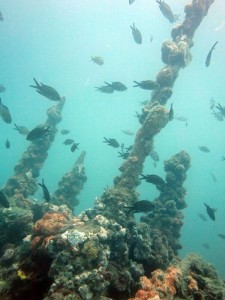 Soon we found the aft anti-aircraft battery consisting of four 20mm cannons mounted inside an open circular tub completely covered in soft corals and colourful sponges.
Soon we found the aft anti-aircraft battery consisting of four 20mm cannons mounted inside an open circular tub completely covered in soft corals and colourful sponges.
Continuing aft, the stern 102mm deck gun slowly came into view. Pointing defiantly skywards it too was covered in sponges, mussels and soft corals.
Bonus finds here included tiny purple and blue nudibranchs smaller than my thumbnail and a small Langoustine with beautiful blue eyes boldly defending its home in the mouth of the gun’s barrel.
Wreck number 2 was a 4400 ton freighter recently identified as the Hans Schmidt lost in 1943. Built in Holland in 1920 and originally named Albirgo she had several owners, the last being a German company who renamed her Hans Schmidt. On 27th January 1943 she was in convoy laden with war materials when she hit a mine near Pula which totally destroyed her forward hold.
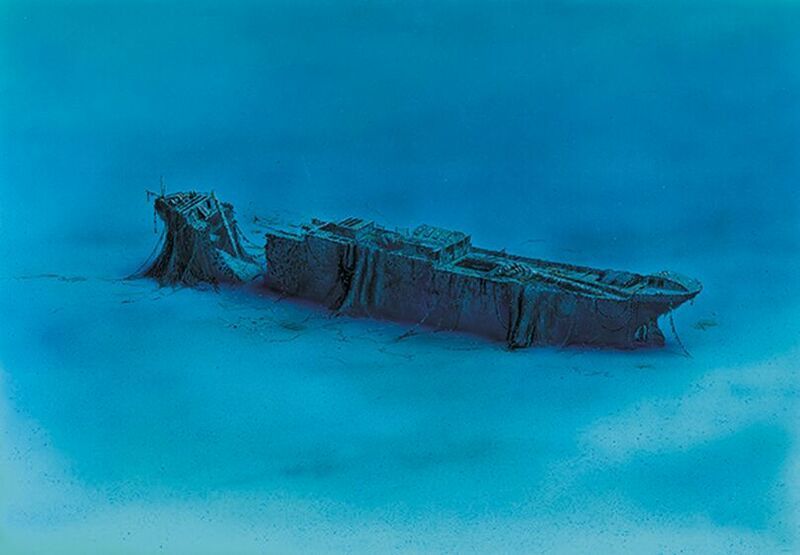 She now lies upright in 41 meters with her main deck at 33 meters and her bow and fo’csle areas effectively separated from the rest of the ship by a 15 meter gap where the forward hold used to be.
She now lies upright in 41 meters with her main deck at 33 meters and her bow and fo’csle areas effectively separated from the rest of the ship by a 15 meter gap where the forward hold used to be.
My dive began on the main deck roughly half way between the wrecked forward hold and the remains of the superstructure from where I headed aft. The journey took me past the remains of her superstructure eerily draped in trawl nets and along her side rails covered with hard corals and clumps of bright yellow sponges.
At the extreme stern there’s a small easily accessed compartment which contains the ship’s auxiliary steering system complete with quadrant as well as providing a home for shoals of small fish and a myriad of mussels and sponges.
Descending over the ship’s graceful stern I followed her impressive rudder down to the sea bed and her single propeller. As the bottom approached two huge propeller blades loomed into view each at least 6ft long and covered in dark sponges. Divers can easily swim around the blades and through the gap between the ship’s hull and the rear of the rudder creating a great photo opportunity.
The third of my Croatian “Big Five” was the Austro-Hungarian liner Baron Gautsch. Built in Dundee for the Imperial Osterricher-Lloyd line and launched in 1908, she was once one of the most luxurious ships in the Mediterranean.
With the outbreak of WW1 she was seconded to the Austro-Hungarian navy and used as a troopship and freighter supporting their forces. On 12th August 1914 she was transporting 350 civilian evacuees to Trieste when she accidentally entered a “friendly” minefield being laid near Pula. Tragically she hit one of their mines and rapidly sank. 147 passengers died in the disaster but miraculously 200 others were rescued by nearby ships despite the obvious risks to their own safety. She now sits upright and largely intact with her main deck at 35 meters.
The plan was to start at the bow and follow her starboard companionway to the stern before returning via the lifeboat deck. Descending through the clear water the shadowy outline of the wreck soon came into view, even though it was still over 20 meters below.
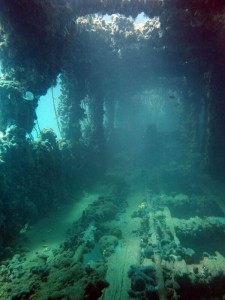 The bow and foredeck area is very photogenic with the outline of the main superstructure just visible in the far distance.
The bow and foredeck area is very photogenic with the outline of the main superstructure just visible in the far distance.
Moving off, we followed the toppled foremast to the enclosed starboard upper promenade deck. Entering through one of the large windows, the sponge and mussel-encrusted companionway disappeared into the distance, and with much of the original teak decking still visible, it makes a very atmospheric swim through.
To the left, gaps between the lifeboat deck supports provided easy escape routes to open water whilst to the right large holes in the steelwork provide tantalising glimpses of her once luxurious cabins.
At the stern we descended to main deck level and found several large Scorpion fish in residence (so please take care where you put your hands).
Ascending to the lifeboat deck, the twin rows of empty davits were a poignant reminder of the tragedy visited here 102 years earlier. Heading forward we passed the sponge covered dining room skylight with its portholes still in place and found the engine room hatches whose slats have collapsed allowing us to look in and see the top of the ship’s huge steam engine rising up from the depths.
Continuing forward we found a steel room just aft of the bridge which may have been an auxiliary steering position, though nothing of its interior has survived. Sadly the bridge and its treasures are all gone, victims of time, fishing nets and salvagers (though the steel bridge wings still remain).
The fourth of my “Big Five” wrecks was HMS Coriolanus, a Shakespeare class minesweeper built in 1940 by Cochrane and Sons of Selby, North Yorkshire. At 150ft long and with only 3 x 20mm Oerlikon AA guns, she was by any standard small and lightly armed. Despite her diminutive size however, she punched well above her weight, supporting Allied landings in North Africa and Sicily, where her shallow draught enabled her to sweep mines much closer inshore than many of her larger sisters.
On 5th May 1945 she was patrolling off Novi Grad when she hit a mine. Some say she was trying to get close to a major Red Army base to listen to their radio traffic whilst others think her luck simply ran out. Either way she sank within minutes and now lies upright in 30 meters.
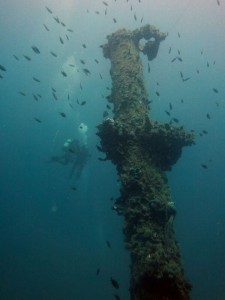 Descending to the bow it was obvious the visibility wasn’t going to be anything like we’d experienced on the Baron Gautsch. The water here was distinctly “milky” and as we closed on the wreck we could see a thick, white, mist like layer surrounding the ship through which its guns, masts and superstructure emerged like trees in a haunted wood; very strange.
Descending to the bow it was obvious the visibility wasn’t going to be anything like we’d experienced on the Baron Gautsch. The water here was distinctly “milky” and as we closed on the wreck we could see a thick, white, mist like layer surrounding the ship through which its guns, masts and superstructure emerged like trees in a haunted wood; very strange.
First we explored the two forward anti-aircraft batteries. Their guns, each covered in sponges and hard concretions, dipped towards the sea-bed seemingly in a silent salute to their lost ship whilst around them neatly stacked boxes of ammunition lay ready for use.
Moving aft we ascended to what had once been the ship’s bridge on top of the armoured wheelhouse. The bridge had disappeared long ago and now only the broken main mast remains to remind you of how things were.
Arriving at the after deck we negotiated the toppled mizzen mast finally reaching the stern anti-aircraft battery. Its single 20mm gun points out over the stern rail and both it and its mounting are covered with colourful algae and sponges. It’s marvellous how if given enough time simple organisms can transform a deadly weapon into a beautiful sculpture.
With the current picking up, my buddy and I decided to hitch a ride and return to the shot-line. On the way, empty lifeboat davits clutched at us out of the gloom like the branches of sunken trees, but the strangest sight was the ship’s paravaning boom appearing to just float beside the ship as it emerged through the milky layer.
My final “Big Five” wreck should have been the Italian freighter Varese which was lost near Pula in 1915, but unfortunately adverse weather prevented me from getting there this trip. On 18th January 1915 she was on the final leg of a voyage from Tunisia to Venice in heavy weather when her Captain decided to seek shelter in Pula. In doing so he sailed directly into an Austro-Hungarian minefield laid to protect the port. Predictably the Varese struck a mine which totally destroyed her bow, sinking her almost instantly with the loss of all but one of her crew.
Today she lies upright in 41 meters with her main deck at 33 meters and is reported to be a great dive. Covered in sponges and mussels, her superstructure makes a good rummage dive and her steam engine can be seen through large holes in her collapsing main deck. For more adventurous and suitably trained divers it’s possible to explore large parts of the ship’s interior as the passageways and holds are quite wide and safe.
Essentials
When to go
Istria is a “year round” diving destination, though the main season runs from June to October. September is a good time to go as the sea is still warm (23ºC at the surface and 18ºC at depth), visibility is usually very good and most activities are still available.
Accommodation
We bought a package holiday with Thompson holidays flying from Manchester to Pula staying 14 nights at the 4* Island Istra Hotel Rovinj. This cost £1250pp and included a half board + drinks meal plan, road and ferry transfers. Alternatively there’s lots of other accommodation nearby including the Villas Rubin (which incorporates the Rubin Dive centre used on this Safari).
Flights
All flights to Istria land in Pula. In addition to Thompson holidays, Jet2 fly from Manchester and Leeds/Bradford airports whilst Easyjet flies from Stansted and Gatwick airports. Taxi transfers from Pula airport to Rovinj cost approx. £40pp return.
Diving Logistics and costs
My Safari was organised and delivered by Filip Visic (owner of Puffer Dive Centre located at the Island Hotel Istra and co-owner of Dive Centre Rubin, Villas Rubin Rovinj) and his excellent staff.
E-mail & web sites
Filip Visic: fico751@gmail.com
Puffer Diving Centre: www.rovinj-diving.hr
Dive Centre Rubin: www.diverubin.com
My safari cost £400 and included 10 boat dives, a 10ltr twin set, weights and NITROX on every dive.
Note: Currently neither dive centre accepts credit cards. Dive groups/clubs are welcome and there are significant discounts available for groups of 8 or more divers.
Non-diving activities
There’s plenty to do other than diving. St Andrew’s island is a haven for sea birds and small creatures, whilst a short complimentary boat ride takes you to the picturesque streets of Rovinj. In addition the hotel organises tours to other places of interest. The Hotel Istra itself offers a full range of water-sports (June – Oct), Gym, Spa and free Wi-Fi.
News
Book Review: Fire on Monroe Bravo by Fred Lockwood

Fire on Monroe Bravo is the latest book in the Jack Collier series by Fred Lockwood. Our story begins with our lead characters, Jack and Sandro, owners of Marine Salvage & Investigation Company, arriving on the Monroe Bravo Oil & Gas Platform in the North Sea. Having secured a contract for their vessel the MV Stavanger to act as support ship to the platform for TransGlobal Oil, our protagonists are on a celebratory visit.
However almost as soon as they arrive a series of explosions rock the platform, causing huge damage, loss of life and the very real danger of a massive human, ecological and financial disaster.

As the danger mounts for both our heroes and the surviving workers, Jack and Sandro will have to escape the inferno, all while trying to save the platform and the men still trapped unable to help themselves.
The disaster sets the scene for the unfolding story lines following the fate of the platform and our main characters, the police investigation into a suspected terrorist act and the actions of TransGlobal Oil as they attempt to navigate the pubic outcry and financial repercussions.
In his eighth book, Fire on Monroe Bravo, Fred Lockwood delivers an explosive thriller, with plenty of above and in-water drama, and our heroes fighting for survival, what more can you ask for?
We thoroughly recommend this read and look forward to the next in the series. For more information about his book series, you can check out the reviews of his previous books here on Scubaverse.
- Title: Fire On Monroe Bravo
- Author: Fred Lockwood
- ISBN: 979-8325324536
Available in a paperback version and for Kindle from Amazon and book stores.
Blogs
Alonissos: The complete diving destination (Part 1)

In June we were incredibly fortunate to be invited to dive in Alonissos, a small Greek Island in the Sporades island chain located in the North Aegean Sea. While I have long been a big fan of the Greek Islands as a great holiday destination, I had not had the opportunity to do any diving on previous visits and Mike and I were extremely excited to see what Alonissos had to offer both above and below the surface!

The Sporades are easily accessible via the airport in Skiathos (the first island in the chain), which is served by Jet2 flights from all major UK airports from May through October. Numerous ferries and charter boats make island hopping from Skiathos Town a breeze. After an hour boat ride, the picturesque port of Patitiri was a wonderful introduction to Alonissos, where we were met by our gracious hosts Kostas of Albedo Travel and Dias of Alonissos Triton Dive Center. Mike and I were delighted to be staying at the Paradise Hotel, aptly named for its stunning views over the sea and great location for walking to the waterfront.

Alonissos is beautifully situated in the National Marine Park of Alonissos and the Northern Sporades, the largest marine protected area in Europe. The surrounding seas offer fabulous marine life, including incredibly rare species such as the Mediterranean monk seal. They boast deep walls covered in gorgonians and sponges, stunning topography with caverns, swimthroughs and pinnacles, and the first accessible ancient shipwreck from 500BC!

In locations where historical sites have been reported, the waters are largely restricted, but with collaboration between government, underwater archeologists and dive centres, incredible underwater museums are being created for a truly unique diving experience. Alonissos is home to the first of these, the Ancient Shipwreck of Peristera Accessible Underwater Archeological Site. The chance to dive into history (along with reports of healthy reef life and amazing underwater topography) meant Mike and I were keen to get in the water.

Our introduction to the diving around Alonissos was at the Agios Georgios Pinnacles, in the channel between Alonissos and Skopelos. This fantastic site was named “The Chimney,’ and proved to have a huge amount to see. We got to a decent depth here (over 25m), and marvelled at a colourful reef wall with a wonderful swim through whose rocky walls were absolutely covered with life. As well as brilliant topography there was no shortage of macro life here. We saw numerous nudibranchs, five different species in total. The second dive at Mourtias reef nearby was a shallower dive along a nice wall with lots of crevices. Several moray eels and grouper called this site home. We enjoyed looking in the crevices for lobster and smaller benthic life, such as cup corals and tunicates.

Our itinerary allowed us two dives a day with afternoons left to explore the island with our hire car and evenings to enjoy the famous Greek hospitality. This proved to be a lovely mix of in-water and land based diversions.

The next days diving to the Gorgonian Gardens and Triton’s Cave was to be even better! These two stunning sites are nothing short of fabulous. The Gorgonian Gardens was a deep wall near to the Agios Georgios islands. The ever-present currents in this deep channel meant that the sea life was amazing … the namesake Gorgonian sea fans dotted the wall at a depth of 30 to 50 meters, getting ever larger the deeper we went. Above 30m was by no means less beautiful, with sponges, corals, scorpionfish, moray eels and some rare and colourful nudibranchs.

The second shallower dive of the day was to Triton’s Cave or the Cavern of Skopelos, on the east side of that island. The spectacular rock formations had wild striations both above and below the water making a truly epic topography. The cavern entrance was at 14m, and big enough for a buddy pair, winding up to 6m and passing two beautiful windows out into the blue. Emerging from the cavern, the light at the shallower depths and the incredible rock formations made for a fantastic gentle swimming safety stop and we all surfaced by the boat with massive grins.

Check out our next blog :Alonissos: The complete diving destination (Part 2)” to hear about our amazing dive on the 2500 year old Peristera Wreck!
Thanks to:
Alonissos Triton Dive Center https://bestdivingingreece.com/
Albedo Travel https://alonissosholidays.com/activities/
Paradise Hotel https://paradise-hotel.gr/
Alonissos Municipality https://alonissos.gr/en/
-

 Blogs2 months ago
Blogs2 months agoDiving With… Nico, Ocean Earth Travels, Indonesia
-

 News1 month ago
News1 month agoMurex Bangka Announce New Oceanfront Cottages & Beachfront Dining
-

 Blogs2 months ago
Blogs2 months agoA new idea in freediving from RAID
-

 Marine Life & Conservation1 month ago
Marine Life & Conservation1 month agoIceland issue millionaire whale hunter a licence to murder 128 vulnerable fin whales
-

 Marine Life & Conservation2 months ago
Marine Life & Conservation2 months agoThe Shark Trust Great Shark Snapshot is back
-

 News3 months ago
News3 months agoCharting New Waters; NovoScuba Goes Global with the Launch of their Revolutionary Dive Training Agency!
-

 Gear News1 month ago
Gear News1 month agoNew Suunto Ocean – a dive computer and GPS sports watch in one for adventures below and above the surface
-

 Marine Life & Conservation Blogs2 months ago
Marine Life & Conservation Blogs2 months agoBook Review: Plankton


